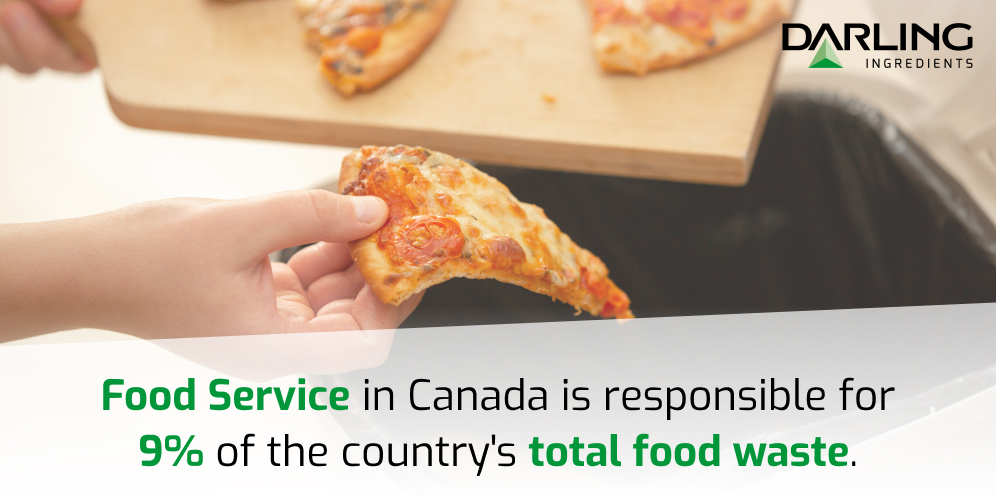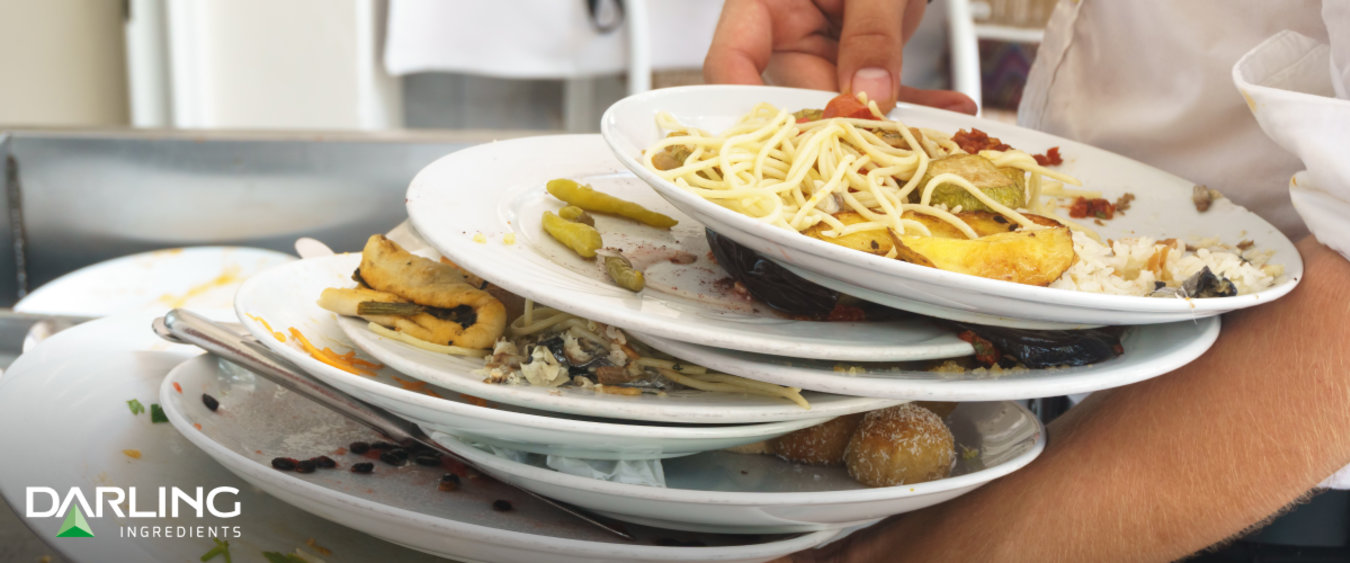As a country, we waste more than half of all produced food. The sad truth about this staggeringly high number is that we could avoid most of it.
How Much Food Do Restaurants Waste?
Food Service in Canada is responsible for 9% of the country’s total food waste. Some of this is due to inedibles like peels. However, there are areas where wasting food is avoidable.
Food wastage has a negative economic impact as well as a negative ecological impact. For people already suffering from food insecurity, a large part of their monthly income goes toward food. When food wastage is high, food costs rise due to lower quantities.

Where Does the Waste Come From?
From field to consumer, food waste occurs in every phase of the supply chain. However, restaurants are in a unique position that enables them to reduce their waste and help them save money.
Pre-Consumer Waste
Pre-consumer waste covers all areas in which waste occurs before reaching the customer. Some of this includes peels, skins, and bones — inedibles we could repurpose towards renewable energy.
Besides inedible scraps or spills, another area of pre-consumer waste is spoilage. Everyone should prioritize ingredients before their expiration dates.
Post-Consumer Waste
Post-consumer waste is wasted food that has reached the customer.
One unfortunate way post-consumer waste happens is through “refires.” This term refers to restaurant food returning to the kitchen because either the customer disliked it or the staff did not prepare it correctly. Not only does this create excess waste, but it also costs your restaurant twice as much money to make a single plate.
A second, more controllable area of post-consumer waste is portion control. Sure, many customers enjoy big portions — but you avoid the risk of food waste when the amounts are smaller.

Reduce Your Restaurant’s Food Waste
With 2/3 of food waste in restaurants being avoidable, let’s discuss how to reduce food waste in these establishments.
Perform a Waste Audit
An excellent place to start is by gathering information. A waste audit will help you know exactly how much is being wasted.
There are a lot of different ways to go about doing this. Some options include categorizing and weighing your trash. Or you can keep a log of everything that gets thrown away.
Here are some things to keep track of:
How often do ingredients get tossed
How much food is left while clearing off a table
What items aren’t selling well
These three areas will help you know if you’re buying too many single ingredients, how to improve your portion control, and what items you should remove from your menu.
FIFO
First in, first out (FIFO) is a method for inventory rotation. To put the phrase simply, use older food items before newer items.
An uncomplicated way of organizing is labeling each ingredient with the date purchased and the date it’s projected to spoil. It’s also best practice to arrange your inventory by type.
Maintaining good inventory management will take extra effort. However, your food will be fresher, you’ll waste less, and your margins will increase.
Multi-Use or Re-Purposed Food
When preparing your menu, it’s essential to consider ingredients with multiple uses. Avoid menu items that require a single element, unusable in other dishes.
Another option is repurposed food. You can turn yesterday’s bread into croutons. One restaurant owner used fat scraps from whole cow purchases to make butter.
Weekly specials are also a great way to sell food before it spoils. You could even repurpose the food by making a daily or weekly special using surplus food.

Use Seasonal Ingredients
Seasonal ingredients are best when they’re in season. You may find that purchasing the same number of seasonal ingredients year-round may end in more waste during their off-season.
If it’s fresh, only use it in-season. This practice ensures quality, promotes urgency for customers to order, and that you can use up the whole inventory before the menu changes.
Invest in Technology
Decreasing inaccuracies during the ordering process is a solution for refires.
Investing in technology with handheld point of sale (POS) devices for servers increases communication between the front and back of house. Heightened communication further decreases any mistakes while ordering.
Here’s What to Do With Food Waste
We can do a lot to prevent food waste in our restaurants on the front end, but some food wastage might be inevitable.
In this area, we can combat food insecurity and reduce the direct climate impact of our activities.
Feed Your Employees
Your restaurant may create a lot of leftover food. Don’t let that go to waste. Items that aren’t reheatable for customers can become tomorrow’s employee lunch.
There’s no reason you can’t repurpose leftover food for your employees to enjoy, especially if it would otherwise end up in the dumpster.
Donate
Good ingredients don’t always fit into your menu. You can donate these ingredients to food banks, helping your community decrease food insecurity.
Start by looking for local organizations and connecting with any food rescue programs to which you could donate any leftover food.
Compost or Recycle
Finally, you can repurpose unused food scraps in a variety of ways.
Non-Meat products are compostable, and their extra nutrients make excellent plant fertilizers. If pick-up is unavailable in your municipality, you can always start a garden for fresh produce.

Partner with Darling Ingredients to Find Sustainable Solutions
When you partner with Darling Ingredients Canada, you partner with the industry leader.
Start turning your used oil into tomorrow’s fuel. Our restaurant services division provides a diverse lineup of state-of-the-art used cooking oil storage equipment. We also offer grease trap cleaning, ensuring your equipment effectively collects sanitary fat and bone.
Contact us today to start putting your waste to work. 1-800-263-0302
Contact Sales
For customer service inquiries call our toll free number (800) 263-0302
By submitting this form I agree to the privacy policy including the usage of contact details to contact me for marketing purposes.
